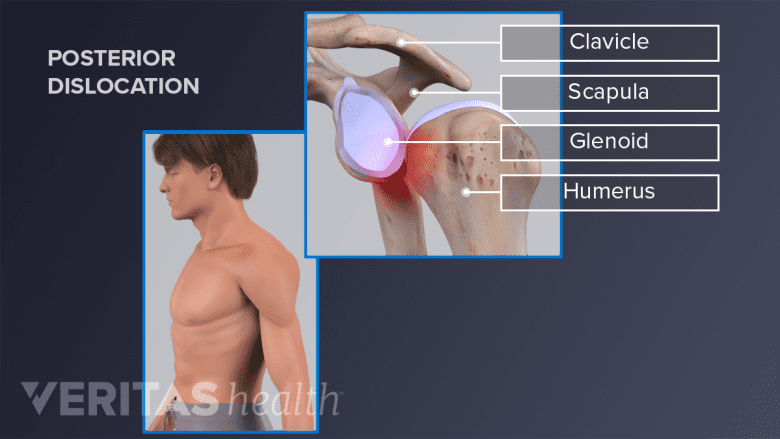Depending on the procedure and approach, most shoulder dislocation surgeries are either outpatient or involve an overnight stay before discharge the next day. Individuals should prepare for their release by arranging to have a friend or loved one drive them home.
For 4 to 6 weeks after surgery, the affected arm will be kept in a sling to promote healing. The sling can be taken off for bathing, dressing, or performing arm exercises, but it should stay on otherwise. Patients can do gentle range-of-motion movements for their elbow, hand, and wrist immediately after surgery.

Shoulder dislocation involves the separation of the shoulder joint, often requiring surgical intervention for persistent issues.
In This Article:
- Surgery for a Dislocated Shoulder: What to Expect
- Recovering from Shoulder Dislocation Surgery
- Physical Therapy and Recovery Timeline After Shoulder Dislocation Surgery
Tips for Sleeping
Sleeping can be complicated after shoulder dislocation surgery. Many people find it helps to sleep sitting up in a recliner, with a pillow behind the affected arm. In bed, a few pillows can be used to create a protected spot for the shoulder and keep it in a neutral position. The sling should be worn at night generally for 3 to 4 weeks after surgery.
Managing Pain After Surgery
An interscalene peripheral nerve block, which affects sensation to the shoulder and arm, may be used to help control pain during the acute recovery period, immediately following surgery. Before patients return home, they may be given a prescription for an opioid (narcotic) medication to manage post-surgical pain. Since opioids pose serious risks for side effects and addiction, they should be taken for as short of a duration as possible. Once patients stop taking an opioid, they can use non-steroid anti-inflammatory drugs (NSAIDs) such as ibuprofen or naproxen to manage pain.
In addition to medications, these tactics can help manage post-surgical pain:
- Using cold therapy for 10 to 15 minutes several times a day. This decreases inflammation and dulls pain signals to the brain.
- Doing assigned therapy exercises, once patients are cleared to do them.
It may feel counterintuitive to move the affected shoulder, but physical therapy and other approved activities will help fend off stiffness and the formation of scar tissue.
Watch for Signs of Infection
As with any surgery, shoulder dislocation surgery comes with a few risks. One potential complication after surgery is the possibility of infection at the surgical site.
Watch for these possible signs of infection:
- The surgical site is red, warm, and swollen
- There is excessive blood or pus coming from the wound
- The patient has a fever over 101 degrees
Individuals who suspect a potential infection should contact their physician without delay.

